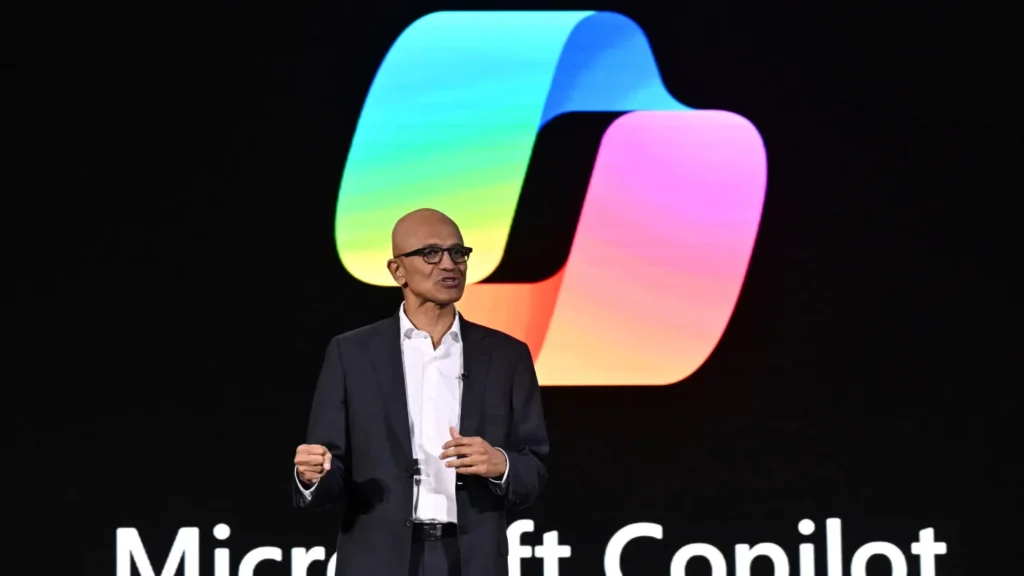As the world gears up for Apple’s 2025 Worldwide Developers Conference (WWDC), excitement builds around new software updates, hardware surprises, and ecosystem enhancements. But amid the usual fanfare, one glaring question looms: Will Apple finally close the artificial intelligence (AI) gap between itself and rivals like Google, Microsoft, and OpenAI?
For years, Apple has been a master of hardware-software integration and user privacy. Yet when it comes to cutting-edge AI capabilities particularly in generative AI and large language models (LLMs) Apple continues to lag behind. The upcoming developer event might showcase incremental AI features, but it’s unlikely to redefine the company as a serious AI leader in the near term.
The Current State of the AI Race
Who’s Leading the AI Frontier?
When evaluating AI leadership, the dominant players are clear:
- OpenAI: Creator of ChatGPT and foundational LLMs like GPT-4, OpenAI remains the face of generative AI.
- Google DeepMind: With its Gemini AI model and integration into Google Search and Workspace, Google is pushing AI into the hands of billions.
- Microsoft: Through its massive investment in OpenAI and integration of Copilot across Windows and Office, Microsoft is redefining enterprise AI.
- Meta: LLaMA and AI-powered experiences in Facebook, Instagram, and Threads illustrate Meta’s serious AI push.
These companies are not just experimenting they’re deploying AI models into large-scale consumer and enterprise ecosystems.
Where Does Apple Stand?
Apple has long been a leader in consumer technology, known for its seamless hardware-software integration, privacy-centric design, and premium ecosystem. However, when it comes to artificial intelligence particularly generative AI and large language models (LLMs) Apple is noticeably behind the curve. While competitors like Google, Microsoft, and OpenAI have made massive strides in deploying AI at scale, Apple has remained relatively quiet, focusing instead on incremental enhancements like on-device photo editing, dictation, and health insights.
Siri, once considered groundbreaking, now struggles with basic contextual understanding compared to modern AI assistants. Apple’s Neural Engine does enable some impressive local machine learning tasks, but it lacks the scalability and depth offered by cloud-based AI infrastructures. Moreover, Apple’s AI efforts have largely remained closed and proprietary, with limited developer access and no open-source contributions to foundational AI research or tools.
This cautious and privacy-first approach reflects Apple’s core values but it also restricts innovation in the rapidly evolving AI landscape. As a result, Apple currently plays more of a follower role in AI, rather than that of an industry trailblazer. Until Apple commits to deeper AI investments and broader developer engagement, it will continue to trail behind the leaders of the AI revolution.
What We Expect at WWDC 2025
Incremental AI Features, Not Foundational Shifts
WWDC 2025 is expected to introduce updates to:
- iOS 19 and macOS 15 with AI-enhanced features like smarter autocorrect, better Siri integration, or improved Spotlight suggestions.
- Apple Intelligence SDKs that allow developers to create apps with AI features (but possibly without access to advanced LLMs).
- Health and wellness AI tools in Apple Watch or iPhone to analyze biometric data.

These updates, while useful, remain consumer-focused and narrow in scope, rather than signaling a leap into the AI frontier.
Possible Announcements (and Their Limitations)
| Feature | Likely Impact | Why It Won’t Close the Gap |
|---|---|---|
| Siri 2.0 | More conversational and context-aware | Still likely to run on-device, limiting deep reasoning |
| AI App Tools | Helpful for developers | Lacks generative AI depth or LLM support |
| AI-Powered Photo/Video Editing | Consumer-friendly | Already seen in Samsung, Google Pixel, Adobe |
Why Apple Is Lagging in AI
Privacy-Centric Approach Hinders Cloud AI
Apple’s brand is built on privacy, favoring on-device processing over cloud-based AI. While this preserves user data, it restricts Apple’s ability to deliver real-time generative AI tools that require massive computational power and user data analysis.
- LLMs like GPT-4 or Gemini require huge cloud infrastructure.
- Apple’s neural engine is powerful, but it can’t match the scale of cloud AI models.
Lack of Open AI Research
Unlike Google, Meta, or OpenAI, Apple doesn’t publish major AI research papers or release models to the community.
- No public LLMs, datasets, or AI benchmarks.
- Minimal presence in conferences like NeurIPS or CVPR.
This slows community engagement and limits Apple’s role in shaping the future of AI.
Siri’s Slow Evolution
Once a pioneer, Siri is now widely viewed as limited and frustrating.
- Basic commands still fail without internet.
- Multistep reasoning is poor.
- Lacks contextual understanding found in ChatGPT or Alexa.
Even with a Siri update at WWDC, it’s unlikely to leapfrog past competitors.
How Rivals Are Winning the AI Game
Google’s AI-First Strategy
Google declared an “AI-first” mission in 2016. Today, Gemini powers:
- Smart email replies, code suggestions, and even video generation.
- Multimodal AI experiences in Search and Android.
Microsoft’s Enterprise AI Play
By embedding Copilot into Microsoft 365, Teams, and Azure, Microsoft:
- Automates workflows and boosts productivity.
- Creates developer tools powered by GPT-4 through GitHub Copilot.
- Has full-stack AI from model training to deployment.
OpenAI’s Ecosystem
OpenAI has:
- Released GPT Store and APIs for developers.
- Built brand dominance with ChatGPT’s millions of users.
- Created plugins, agents, and multimodal features.
These innovations have changed how developers, students, and businesses operate.
Apple’s Strengths Aren’t in LLMs—Yet
Hardware Integration
Apple excels at making hardware and software work together. The Neural Engine in iPhones and M-series chips is optimized for AI inference.
- Great for offline tasks like photo sorting, voice dictation, and handwriting recognition.
- Not designed (yet) for running full LLMs locally.
UX and Ecosystem Control
Apple will likely introduce AI tools that work flawlessly and intuitively within its ecosystem but without the flexibility or openness of other AI platforms.
- This makes Apple’s AI feel polished but limited.
- Developers can’t build LLM-based apps natively on Apple platforms without relying on third-party APIs.
Developer Frustration and Market Concerns
A Growing Developer Divide
While WWDC provides polished tools, developers increasingly want access to:
- Model fine-tuning APIs.
- Vector databases.
- Memory and agentic AI frameworks.
Without these tools, developers will continue to turn to cloud-first platforms like Google Cloud AI or Azure OpenAI Service.
Investor & Market Sentiment
Apple’s lack of aggressive AI investments raises concern among analysts:
- Stock market pressure to respond to Microsoft and Nvidia’s AI-fueled growth.
- Market perception that Apple is “behind the curve” on the next major computing wave.
WWDC may temporarily uplift sentiment, but unless Apple reveals a transformative AI vision, skepticism will persist.
What Apple Could Do to Catch Up
Invest in Its Own Foundation Models
Apple could accelerate internal development of its own large language and multimodal models optimized for:
- On-device performance.
- Private local inference.
- Integration with Siri, Spotlight, Safari, and Apple Maps.
Acquire AI Startups Strategically
A few targeted acquisitions could speed up Apple’s AI transformation:
- Voice and NLP startups for Siri.
- Multimodal AI firms focused on vision + text.
- Privacy-first LLM startups like those working on federated learning.
Introduce an AI Developer Platform
Apple could launch an AI SDK that allows:
- Local fine-tuning of models on Apple Silicon.
- Seamless integration with Core ML.
- Custom AI agents for iOS/macOS apps.

A Gap That Won’t Close Overnight
Apple’s WWDC 2025 will undoubtedly offer well-designed features, tighter ecosystem integrations, and performance upgrades. But these incremental improvements won’t be enough to close the widening AI gap between Apple and its competitors.
To catch up, Apple must think beyond polished features and lean into foundational AI investment, cloud capabilities, developer flexibility, and open innovation. Until then, Apple may dominate the premium hardware market but in the AI race, it’s still playing catch-up.
- Apple is behind in AI leadership, especially in generative AI and LLM development.
- WWDC 2025 will showcase incremental AI features, not groundbreaking innovation.
- Competitors like Google, Microsoft, and OpenAI are rapidly deploying scalable AI models into consumer and enterprise products.
- Apple’s focus on privacy and hardware limits its AI capabilities, especially compared to cloud-first rivals.
- To close the AI gap, Apple must invest in foundational models, embrace cloud flexibility, and empower developers.















